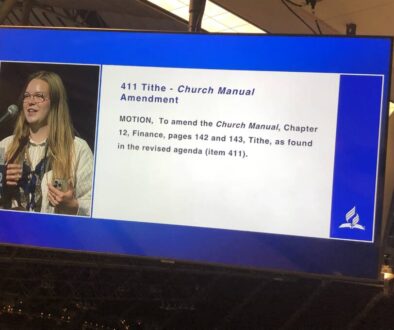Number of Adventists in the U.S. Congress Backslides Two Decades
by AT News Team
When the new congress convenes in January, the number of Seventh-day Adventists among the elected legislators will be just one—for the first time since the early 1990s. Representative Roscoe Bartlett failed to gain re-election from rural western Maryland leaving only Representative Sheila Jackson Lee from inner city Houston. Bartlett is 86 and a Republican. Lee is 62 and a Democrat. The two are so different politically, at opposite ends of the political spectrum, that they have refused invitations to appear together at Washington Adventist University.
Since 1992 there have always been at least two Adventists among the elected members of congress in the United States. From 1995 to 2003 there were three Adventists serving in Congress. Some observers see in the return to just one representative an indicator of Adventist retreat from involvement in society in America.
Jerry L. Pettis was the first Adventist elected to congress in 1966, representing the California district that includes Loma Linda. He was an ordained minister who left denominational employ and started a small business before going into politics. He died in a private plane crash in 1975, and his wife Shirley ran for his seat, was elected and served until 1979. A Veterans Hospital was built near Loma Linda University in his memory. Both Jerry and Shirley were Republicans, although he was seen as more conservative and her agenda proved to be more moderate.
In 1977, while Shirley Pettis was still in Congress, Bob Stump was elected from a district in the suburbs and surrounding rural area of Phoenix, Arizona, as a Democrat. His official biography listed him as a Seventh-day Adventist, although his church participation was never confirmed. He was “assiduously private,” a cotton and grain farmer and long-time politician in Arizona. He served in the state legislature from 1959 until he was elected to the U.S. Congress, including a year as presiding officer of the state Senate. Stump was a conservative Democrat and in 1983 jumped to the Republican Party. He was re-elected until ill health caused him to withdraw from the 2002 election and retire from congress in January 2003. The Veterans Administration Medical Center in Prescott, Arizona, was named in his honor.
Bartlett was first elected in 1992, joining Stump as a second Adventist in Congress and the Republican caucus. He was among the few legislators with a PhD in one of the sciences, at one time a faculty member in physiology at Loma Linda University. Bartlett was an active member of the Seventh-day Adventist Church. He backed dissident pastor Richard Fredericks in a letter to the members of the General Conference Committee before Fredericks took a Maryland congregation out of the denomination. Bartlett stayed with the denomination and developed a close connection with Washington Adventist University in Takoma Park, Maryland.
Often described as the “most conservative” Republican in the House of Representatives, Bartlett was also recognized as an inventor, farmer and business owner. Spectrum recently stated the he had “associated himself with survivalist ideology,” although Science, a publication of the American Association for the Advancement of Science, described the same involvement on his part as leadership on the issue of how to respond to potential problems with electro-magnetic pulse (EMP) warfare. Bartlett’s district had been re-drawn by a state legislature dominated by the other party and his loss is generally attributed to that factor as much as his age and marginalized position which one Baltimore newspaper said included his Adventist faith.
Lee was first elected to Congress in 1995, joining Stump and Bartlett to make three Adventists among the Federal legislators. She was a liberal Democrat who had served on the Houston City Council since 1989 and as a municipal judge prior to that. She grew up in New York City, completed a law degree at the University of Virginia, and moved to Texas with her husband, Dr. Elwyn C. Lee. She continues to be a very active member of the Black Caucus in the House of Representatives and was re-elected with a majority of over 70 percent.
It should not be surprising that the only remaining Adventist in the U.S. Congress is an African American. Parallel to the withdrawal of more and more White Adventists from the mainstream of American society has been the emergence of Blacks and immigrants both within the church and in the larger society. “The demographics of the Adventist Church in North America are on the cutting edge of the demographic trends for the whole country,” explains Monte Sahlin, one of the denomination’s research specialists. “The election was won by America’s first black President with strong support from Hispanics, and that surprised a lot of people who weren’t looking last year when the Census Bureau released trend projections that show that within two decades whites will be in the minority.”
Adventist Today is interested in identifying church members who hold or have run for elected office in state, county and municipal governments. This level of government provides the likely candidates for Federal office in future elections. Readers are invited to send information by Email to news@atoday.org and will not be identified without their specific permission.



